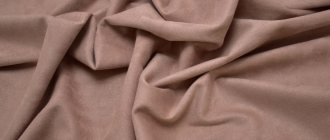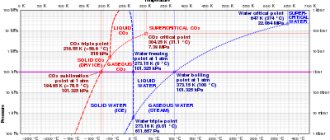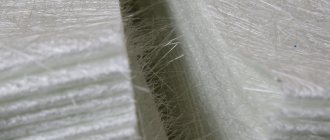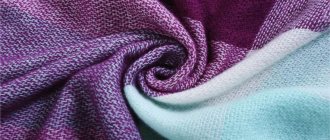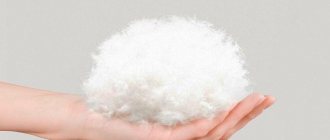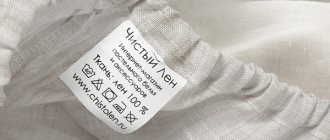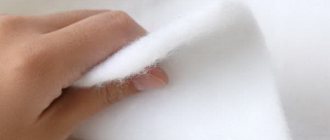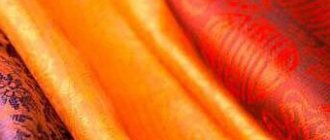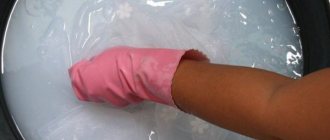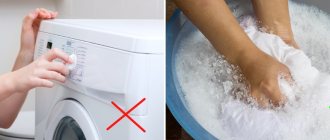What is spandex
The name "spandex" comes from the English word "expands", which means to expand or stretch. Initially, it was decided to create a material with properties reminiscent of rubber. However, it became widespread only in textile production. Initially, the material was produced in North America, but over time its production was organized in Europe, where it received another name - elastane.
In its pure form, polymer material is practically not used, since it looks like a film. It is added to other natural and synthetic fibers to impart stretch properties. Even 3% spandex added to natural fibers can change its structure. The material also underlies such synthetic materials as lycra, supplex, acelon and others.
Origin story
Spandex was discovered in 1958 by US chemists. They wanted to find a synthetic substitute similar to rubber. As a result of chemical experiments and several experiments, a new matter appeared with high strength and restorative characteristics.
Later, polymer production began in Europe and Japan. In the Russian Federation, elastane, as the polymer fabric was called in Europe, appeared in 1975. Now it is produced in the USA, Italy, Japan, Russia, South Korea, and China for the manufacture of clothing and various accessories.
The leader among them is China, and around the world 400 thousand tons of linen are produced annually, and this figure is constantly increasing.
Compound
Spandex is made from petroleum products and consists of elastic threads containing about 85% polyurethane. The stretchability of the material threads is achieved by special weaving of long isotropic fibers with short and rigid ones.
Plastic
Thanks to the special structure, elastane threads tend to stretch 5–7 times and return to their original state. In this case, the number of times the material can be stretched is unlimited.
Shrinkage, weaving and dyeability
If the material is cared for correctly, its fibers will not lose their previous shape. However, if elastane is exposed to high temperatures, it will deform and shrink by almost half. In its pure form, spandex is white, but since it is easily dyed, it can have a variety of colors. The technique of weaving fibers is used only in light industry enterprises and is impossible at home.
What cleaning agents should I use?
Both various gels and powders are suitable. It is important that the packaging bears the inscription “for polysatin”. There are no phosphates in such products and virtually no surfactants.
For example, these work great:
- Persil Gel. It washes the most difficult stains as gently as possible, without damaging the delicate fibers of the fabric. Does not leave streaks, washes off easily from clothes and does not cause allergic reactions.
- Wellery Gel. Takes care of the material during washing. Smoothes a little, gives softness and copes well with difficult stains. Absolutely safe for both fabric and human health.
- Synergetic. The product foams well and is easily washed out of fabric fibers. Hypoallergenic, pleasant, but unobtrusive smell.
- Gloss. Gives softness and shine to any synthetic fabrics, including those containing spandex. Suitable for dark clothes, as it works to preserve color during washing.
Fabric properties
In its pure form, spandex has the following properties:
- very high thermal conductivity, so it does not retain heat at all, so it is hot in a warm room, and cold in a cool room;
- non-hygroscopic, which means it does not allow moisture to pass through at all, so wearing it in hot weather is uncomfortable;
- reacts poorly to ultraviolet radiation, burns out;
- is easily affected by high temperatures, can shrink and become deformed;
- does not withstand mechanical stress, which is why puffs easily form on the surface;
- It shrinks when sewn and therefore requires pre-treatment.
Despite this, elastane performs very well when combined with other materials. Even 2% of polymer fibers included in the composition add to the canvas:
- smoothness and plasticity;
- crease resistance;
- strength;
- shine;
- wear resistance.
The material also combines well with both natural and synthetic threads, is easy to dye, and is cheap. Items made from fabrics containing polymer material fit the figure well and do not require special care.
Application
Spandex - what kind of material is it and what is it made of?
It is widely used in sewing swimsuits for beach holidays, for sports swimming, as well as in the production of various types of sports uniforms.
Bright stage dresses made of spandex are decorated with sequins and rhinestones. With proper care and careful use, such things will last for many years and remain bright.
Today, elastane threads are the main additive to other fabrics, from which comfortable and durable clothes are subsequently sewn: jeans, leggings, T-shirts, tops, dresses, turtlenecks, sweaters and much more.
Where is spandex fabric used?
In its pure form, spandex is practically not used; only in rare cases is it used to sew stage costumes for gymnasts, circus performers, swimmers and figure skaters. Basically, elastane is added to the fibers of natural or synthetic fabrics.
Cloth
Since materials containing elastane fibers have maximum elasticity, they are used for sewing sports and tight-fitting clothing, in particular, suits for skiers, figure skaters, and gymnasts.
Shoes
Sometimes spandex is used in shoe making to increase the elasticity of nylon or other materials. In such shoes, the feet are more comfortable, since the material gently fits the foot without squeezing it.
Fabrics
When combined with a huge variety of materials, spandex helps create new fabrics. For example:
- stretch jeans are made from denim mixed with spandex;
- the combination of polymer material with cotton fibers makes it possible to create fabric for underwear that fits well;
- adding polymer material to nylon helps create shiny and elastic stockings and tights;
- A mixture of wool and spandex is used to sew thermal underwear.
spandex thread
Spandex is sometimes added to natural knitting yarns. It is easier to work with such threads because the material slips a little. In addition, the presence of elastane fibers in natural yarn significantly reduces its cost.
Leading manufacturers
Recently, many manufacturers have been producing spandex with various additives. According to consumer reviews, the following companies have gained the most popularity:
- Al Haram Trader, Pakistan;
- Akshar Enerprise, India;
- ANTEX+CASE GMBH, Germany;
- A&K Fabrics and Textile, Bangladesh;
- as well as textile companies from Russia, Turkey and China.
PHOTO: beru.ruSpandex Loads 8% fabric is used for sewing sportswear
Pros and cons of spandex
Materials containing spandex have the following advantages:
- the fabric turns out to be light, but at the same time wear-resistant;
- not affected by sweat secretions;
- durable and stretch well;
- practically do not wrinkle;
- paint well, but at the same time repel dirt and water;
- are inexpensive.
Despite this, fabrics with elastane fibers have several disadvantages:
- react poorly to ultraviolet radiation;
- do not tolerate exposure to high temperatures;
- are easily subject to mechanical stress, which causes snags to appear on the surface.
It is worth noting that the more elastane in the composition, the more pronounced the shortcomings appear.
A little about manufacturing technology
Today, spandex is produced all over the world. Initially (in the 1940s) it was made from petroleum, acids, and alcohol. Some water and air were also added .
Nowadays, it is obtained by melting the same initial components. The resulting mass is passed through thin holes. In this way the fibers are formed.
Important! Already at the production stage it is taken into account what the material will be used for. So, if the fabric must be rigid, then the fibers are made with corners. When soft, lightweight shock-absorbing material is required, they will be hollow, with smooth transitions.
Combination with other fibers
The use of spandex threads in combination with other fibers helps the materials acquire new properties.
Cotton
Cotton is considered the best material for underwear, as it helps the skin breathe, absorbs moisture, and is hypoallergenic. However, cotton fabric wrinkles, is inelastic and can shrink. When adding even a few percent of spandex to the composition, cotton does not lose its basic properties. On the contrary, the canvas becomes more plastic without losing its shape. Things are made more tight-fitting and last a long time.
Linen
It is considered the best fabric in relation to the body. It is not hot in summer, but not cold in winter either. The fabric breathes and allows moisture to pass through well. Since linen is completely inelastic, it wrinkles a lot. To reduce this indicator, spandex threads are added to flax fibers. After this, the fabric practically does not wrinkle, but retains its original qualities.
Viscose
Viscose, made from wood cellulose, is soft and hygroscopic. The material is very pleasant to the skin, however, it is too fragile, as it tears easily. Thanks to the spandex added to the composition, viscose has the necessary strength.
Polyester
Polyester is used in the weaving industry only in combination with other materials, as it is absolutely not suitable for wear on human skin. Polyester mixed with cotton or viscose becomes more comfortable to wear, however, it remains completely inelastic. The slight addition of spandex to the fibers helps increase the ductility of the fabric.
Lycra
Lycra is a fabric based on spandex fibers. Unlike pure material, lycra has a more matte surface.
Satin
By adding spandex to satin, the material becomes durable, but at the same time soft and airy.
Nylon
Nylon itself is a very durable and dense material, devoid of elasticity. Adding fibers to the composition gives the fabric the necessary ductility and wrinkle resistance.
Detergents
The most important thing is to use the right detergent for polysatin. Various gels are sold, they are used less than powder. Such products contain a minimal amount of surfactants, as well as a complete absence of phosphates.
Detergents
The following substances are used:
- Persil Gel works great on dirty areas. The product penetrates deeply into the fabric, leaving no streaks after washing. Using the gel, the product is smoothed. The product is produced in bottle and capsule form.
- Wellery gel is considered safe, effective, and has an unobtrusive aroma. The substance helps the spandex remain in excellent condition. The product has a mild effect, ideal for using delicate linen.
- Synergetic refers to hypoallergenic substances. Used for elastane as well as other fabrics. The gel foams easily and is washed out of the product.
- Pigeon helps to cope with stains, while perfectly maintaining the original shade. All elements contained in the composition are washed out of clothing. The product does not spoil elastane, so it is suitable for cleaning the material.
- The gloss is intended for cleaning synthetics. It washes lycra leggings well and is suitable for black items. When washing, no streaks or stains remain. The color is retained after washing, things will be soft and delicate. When using Losk, the underwear does not stretch or shrink. Most housewives prefer to prepare washing gels with their own hands. But it is not always possible to cope with severe pollution. The prepared products are used in cool, warm liquid.
Drying
If dried incorrectly, the laundry begins to become damaged and stretch. Things are dried outside or on the balcony, but the ropes must be checked for cleanliness. Rust or dirt will ruin the laundry. It is not recommended to dry items in the sun, as the items will fade and lose color. It is best to turn all outfits inside out.
It is not advisable to hang things made of elastane in the wind, it negatively affects them and the clothes begin to deteriorate. The product is removed from the rope immediately after drying. When drying material in frosty weather, it is recommended to add a small amount of salt, then the clothes will not freeze.
You should not dry items in the kitchen; it is best to hang laundry in a ventilated area at room temperature. Do not use the dryer for spandex, vorin and other finicky items. When dried using this method, the fabric becomes damaged or deformed. All outerwear should be dried on hangers.
Article source: https://stirkadoma.info/kak-stirat-spandeks.html
What means and in what mode to wash spandex fabric, How to wash spandex.
How to choose quality spandex
When purchasing products made from materials containing spandex, pay attention to the following criteria:
- there should be no pellets or puffs on the surface; a homogeneous, even structure of the material indicates a high quality of the fabric;
- check how the canvas stretches and returns to its original position;
- fabric containing spandex has a pleasant smoothness;
- if there are stains on the surface, this indicates poor quality of the material.
Always feel and consider the material carefully when choosing.
In the washing machine or by hand?
Spandex is a capricious material. It should not be washed at temperatures above 40 degrees, wring out too much or excessively rub stains that are ingrained into the fabric. Of course, hand washing is preferable for it, but a delicate cycle in a machine is also possible.
If the contamination is strong, soaking is allowed. To do this, the item must be placed in a basin with cool water and cleaning agent. Leave it like this for 25 minutes and then wash it. Twisting must be avoided during spinning.
Important! Shiny spandex needs to be washed especially carefully. However, as well as wearing clothes made from it. The fact is that after each wash, the shine becomes less and less, especially if the recommended water temperature is not observed.
Features of sewing things from spandex
If you decide to sew something from a material that contains spandex, follow these instructions:
- It is unacceptable to mark the location of the future seam with a pin, otherwise there will be puffs; draw lines with a special pencil or soap;
- choose needles only for stretch or knitwear;
- Use an elastic thread to sew parts together.
Always test the seam on an inconspicuous area of fabric before starting work. See how the material will behave under a particular tension or thread length.
How to care for fabric
Materials containing spandex are easy to care for.
Wash
Hand wash
It is recommended to wash items containing elastane by hand using lukewarm water. Wring out the product carefully and do not twist it. It’s better to let the water drain and hang it over the bathtub to dry.
You can also wash the product in a machine, but only on a delicate cycle without spinning. Use only non-aggressive powders, or even better, washing gel. Never use chlorine bleach.
How to dry and iron correctly
Spandex is afraid of high temperatures, so dry things only in natural conditions, away from heating devices. It is not necessary to iron the clothes; when you put them on, they will straighten themselves on the body. If you still want to iron the product, turn on the low temperature setting on the iron and first iron an inconspicuous area of the fabric. Material based on natural fibers can be ironed through gauze or cotton fabric.
Spandex is a synthetic material primarily used to complement natural or man-made fibers. Fabrics become more viscous and elastic, practically do not wrinkle and last longer. Before purchasing products containing spandex, be sure to consider the quality of the material, and after purchasing, take proper care of the item, then it will last as long as possible.
Care instructions
Spandex is transported in boxes or other containers protected from light. 100% spandex cannot be ironed, but when adding natural fabrics, this process can be done using gauze as a lining when in contact with the iron.
It is better to store things in a dry place.
Washing features
Spandex is sensitive to aggressive detergents - the use of bleach and frequent dry cleaning are prohibited.
Important addition: spandex products can only be washed at temperatures not exceeding 40 degrees.
Drying nuances
During the drying period, it is prohibited to hang things in places where there is access to direct sunlight or nearby heating sources.
The influence of these factors can lead to a partial loss of color in the item. Machine drying is also prohibited in most cases.
